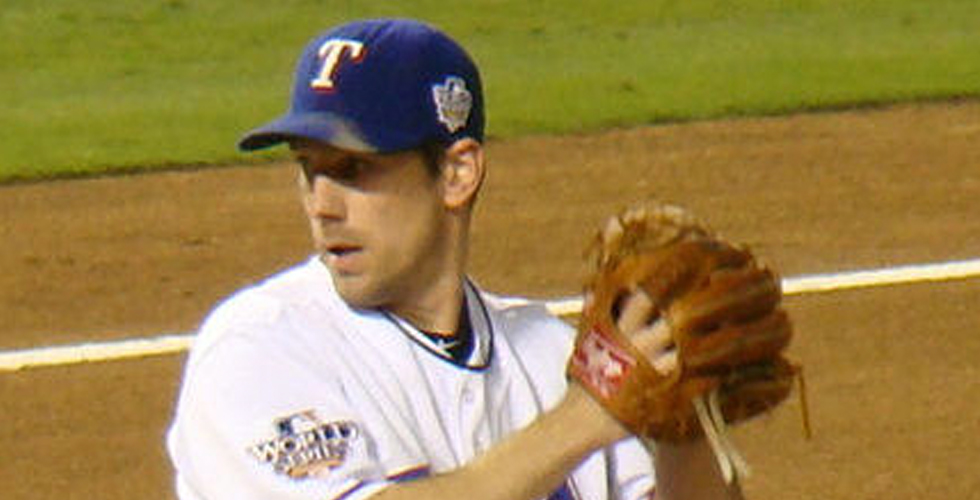World Series Psychology

(Inside Science) -- The pressure on World Series hitters is immense. It might not have looked that way in game one as hitters battered each team's ace pitcher, especially the previously untouchable Texas Rangers pitcher Cliff Lee. But if game two is close and San Francisco Giants closer Brian Wilson is winding up to deliver a pitch to a Rangers slugger, what should be going through that hitter's head?
Almost nothing, say psychologists.
Baseballs move too fast for hitters to wait until the ball is released to recognize the pitch type, determine its trajectory, decide whether or not to swing, and after all that, start their swing. The process has to begin before the pitch is thrown and players must quiet their minds in order to depend on their intuition, experience, and muscle memory to help them succeed.
This is most crucial in the high pressure situations of playoffs and the World Series -- and it is why succeeding in the playoff crucible is difficult, but for many pros, completely ordinary.
"How in the world does the brain figure out how to hit a baseball? In some ways it should be impossible," said Mike Stadler, a cognitive psychologist at the University of Missouri in Columbia and author of "The Psychology of Baseball: Inside the Mental Game of the Major League Player."
It may be the mantra of well-intentioned youth coaches everywhere, but it's impossible for a hitter to watch the ball travel from the pitcher's hand to the catcher's glove -- at least at major league speeds. A 90 mph pitch takes about four-tenths of a second to travel from the mound to the plate. Stadler said that good hitters lose track of the ball about 6 feet from home plate and lose the ability to adjust a swing to the ball's path before the pitch travels two-thirds of the way to home plate.
Rob Gray, an applied psychologist at Arizona State in Mesa, uses a hitting simulator in his lab to study basic issues about what hitters perceive and how they react at the plate during this split second.
"Batters have to enter the situation with a prediction, an expectation about what's going to come next," said Gray. "To wait until the ball has been released and then predict where [the ball is] going to go and then swing -- it's too fast to try and do that."
Gray has also investigated what happens to players in pressure situations. He found that elite players have difficulty when they try to control something consciously that is normally an unconscious process reliant on the player's muscle memory.
When a player struggles to succeed in pressure situations, it may be that his system is overloaded, thinking about too many things, or thinking about the wrong things. The ability to act like the bottom of the ninth inning of a World Series game is no different from the first at bat of spring training might be one key to succeeding under pressure.
People who dig deep into the statistics of baseball have long been unable to show evidence that any individual players consistently come through in the clutch. It's one of the game's great mysteries that something that seems like such an obvious phenomenon should go unconfirmed, especially considering the way baseball enthusiasts collect and analyze statistics. Some game situations provide greater pressure on hitters and pitchers alike. Mere mortals should feel that pressure and react.
Maybe major leaguers aren't like the rest of us.
"I think everybody in the major leagues is, most of the time, a clutch hitter," said Stadler. "If you're not a clutch performer you're not going to get there."
Gray and Stadler both said that the challenge of being a clutch player should be thought of as overcoming the struggle to maintain his normal performance level when the stakes are high, as treating an important play the same as one that is routine.
Major league players able to perform just as well with and without pressure have trained themselves to succeed in tense situations throughout an athletic career that likely began with adults placing baseballs on tees for them to hit.
"Being able to do what you do normally, it sounds easy to say, but it's hard to do," said Gray.
"Some of us probably can't concentrate like you need to be a major league player," said Stadler. "I know I couldn't."
Dealing with the pressure of the World Series can be a struggle for inexperienced players, but Stadler noted that every player goes through numerous pressure situations on his rise to Major League Baseball -- which may be why two teams like the Giants and Rangers, without long playoff pedigrees and dependent on young players, can seem completely unfazed by October's bright lights.

